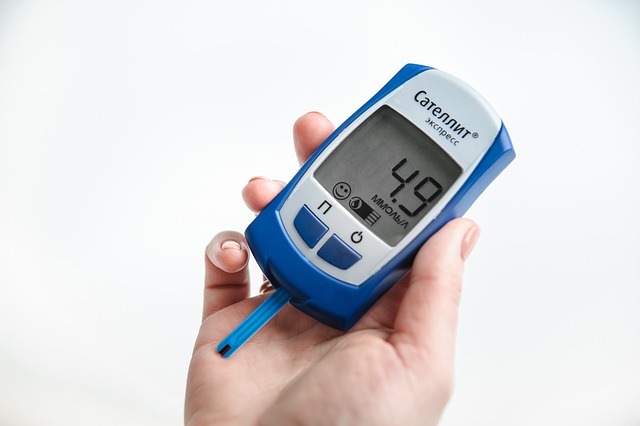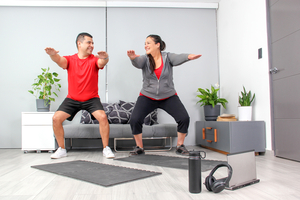Is High Blood Sugar The Same As Hyperglycemia?
Hyperglycemia occurs when your blood sugar level is higher than normal. Diabetes is a chronic condition with hyperglycemia. If you have diabetes, your goals for management include lowering blood sugar consistently. A single high blood sugar measurement can also alert you to the possibility of a hyperglycemic crisis that needs immediate attention. Following are the basics on what hyperglycemia is and how to lower your risk and treat it if it does occur.
Hyperglycemia Definition
To have a diagnosis of diabetes, you need to have high blood glucose or high glycated hemoglobin (A1C), which is a longer-term indicator of your average blood sugar levels. In other words, with diabetes, you have chronic high blood glucose. In prediabetes, blood sugar is higher than normal but not as high as in diabetes.
Hyperglycemia can also refer to acute, or short-lasting, episodes of abnormally high blood sugar levels. You can detect hyperglycemia when you test your blood sugar levels at home and find that the result is higher than the targets your doctor gave you. You may have one goal range for when you check your blood sugar while fasting or before a meal, and another for after a meal. Be sure to ask your doctor what your goals should be at different points in the day, as people’s individual goals may vary.
Hyperglycemia can be a warning sign of imminent danger, and you may need rapid or emergency medical care.

Possible Causes of Hyperglycemia
Hyperglycemia can result when the sugar (in the form of glucose) in your blood is not able to get into the muscle, fat, and other cells that need it. This can be because you do not have enough insulin or because the insulin is not working as well (you have insulin resistance). Instead of being used by your body’s cells, the glucose stays in the bloodstream and builds up as you consume more carbohydrates and/or your liver continues to naturally produce and release glucose into your bloodstream.
Your diabetes medications and other treatment may mainly keep blood glucose under control, but hyperglycemia can develop when the balance is thrown off. These are some likely causes of hyperglycemia.
- Not using insulin properly.
- Not getting enough physical activity.
- Not following your diabetes diet.
- Not using enough insulin or oral diabetes medications.
- Having an illness or infection, including the common cold.
- Having stress in your life.
Lark Diabetes Care can help you stay aware of your diabetes management behaviors so you can lower the risk for hyperglycemia, and it may help you discover ways to reduce hyperglycemia.
Symptoms
You may not have any symptoms of hyperglycemia at the beginning. However, you may notice symptoms if your levels stay high.
- Frequent urination
- Increased thirst
- Unintentional weight loss
- Headaches
- Tiredness
You may also notice symptoms of hyperglycemia if your levels stay elevated for a long time and you develop complications of diabetes. These can include:
- Poorer vision due to retinal neuropathy
- Numbness or pain in feet and hands due to peripheral neuropathy
- Wounds and cuts that are slow to heal and prone to infections
- Kidney damage
Consequences of High Blood Sugar
Hyperglycemia can have serious consequences, including:
- Complications of diabetes
- Diabetic ketoacidosis (DKA)
- Diabetic hyperglycemic hyperosmolar syndrome (HHS)
Chronic hyperglycemia, or having high blood sugar for prolonged periods of time, such as weeks or months, can lead to complications of diabetes. These can include diabetic neuropathy causing tingling or numbness in your hands and feet, kidney disease, vision troubles due to diabetic neuropathy and/or cataracts, foot problems including slow wound healing, and heart disease.
The risk for these complications tends to be higher when your A1C values are higher. That is why your doctor may order A1C lab tests for you multiple times a year. Your doctor may adjust your A1C goal or alter your medications or make other recommendations based on your results. Lark Diabetes Care can help you establish healthier habits to keep blood sugar lower.
You do not need to wait for an A1C test at your doctor’s office to get an idea of how your blood sugar levels are doing. Fasting or post-prandial (post-meal) hyperglycemia can be a sign that your blood sugar is too high most of the time. That is one reason why it is important to measure and record your blood glucose levels frequently if your doctor suggests that you do so. When you use Lark to record and track blood sugar, you may get insights about relationships between your blood sugar levels and health behaviors such as what you ate, whether you exercised, and how well you are following your prescription medication instructions.
Fasting or post-meal hyperglycemia can be not only a sign of increased risk for diabetic complications, but it can also be a warning sign of some serious situations.
- Diabetic hyperglycemic hyperosmolar state (HHS): HHS can happen if your body has insulin, but the insulin is not doing its job well enough. The result is that your body cannot use glucose or fat for energy. Instead, they may be excreted in the urine and you can become dehydrated or go into a coma. This is an emergency situation.
- Diabetic Ketoacidosis (DKA): In DKA, there is not enough insulin in your body. You cannot use glucose properly for energy; instead, your body breaks down fat for fuel and produces toxic ketones. These build up in the blood and some are excreted in the urine. Diabetic ketoacidosis can lead to coma, and it is an emergency situation. You can easily use a home test strip to find out if you have ketones in your urine.
Other symptoms of HHS and DKA can include low blood pressure, confusion, rapid heart rate, and vomiting. Because of the seriousness of hyperglycemia and its consequences, it is important to recognize and treat it promptly.
How to Lower Blood Sugar
There are some strategies you can use to try to lower your blood sugar if it is high. The strategies are not always appropriate for every case of hyperglycemia, so be sure to talk to your doctor so you can have a plan that is safe for you if you find that your blood sugar is high.
- Drink water. This can fight dehydration as it dilutes the high concentration of glucose in your blood.
- Exercise. Physical activity increases your insulin sensitivity and helps get blood sugar back down. Exercise for 15 minutes and then recheck your blood sugar. This is not a safe option if you have ketoacidosis.
- Have a high-protein, low-carb snack, such as a hard-boiled egg, almonds, or cheese.
- Give yourself a dose of a quick-acting insulin medication if you have one.
You should call a doctor for hyperglycemia if:
- You are vomiting and cannot keep down any fluids or foods (emergency).
- You have ketones in your urine (emergency).
- Your blood sugar remains over 240 mg/dl.
- You have diarrhea or vomiting, but can keep down some foods.
- You cannot hit your blood glucose targets even when you are taking your diabetes medications and following your management plan.
Preventing Hyperglycemia and Its Consequences
You can lower your risk for hyperglycemia and related complications by following your diabetes self-management plan.
- Watch your weight. Serve smaller portions of lower-calorie foods.
- Choose healthier foods. Emphasize whole grains, vegetables, beans, nuts, and fish, while limiting sugary foods and beverages, white bread and other refined grains, and fatty meats.
- Monitor your carbohydrates. Eat only a small amount of carbohydrates at a time, and include some healthy fat and protein when you do have carbs. Examples include whole-grain toast with peanut butter and whole-grain pasta tossed with olive oil and chicken breast.
- Be physically active. A good goal for many people is to get at least 150 minutes per week of moderate to vigorous-intensity physical activity. You can start by doing a level you are comfortable with.
- Take your diabetes medications as prescribed.
- Monitor your blood glucose as recommended by your doctor, and use Lark to record and track it, and point out trends and outlying values.
Hyperglycemia is a constant concern in diabetes, but you can take steps to keep blood sugar under control. Using Lark Diabetes Care can make healthy lifestyle choices and other diabetes self-management strategies easier through reminders, tracking, and unlimited, anytime support. New healthy habits can lead to better glycemic control and better overall health











.webp)







